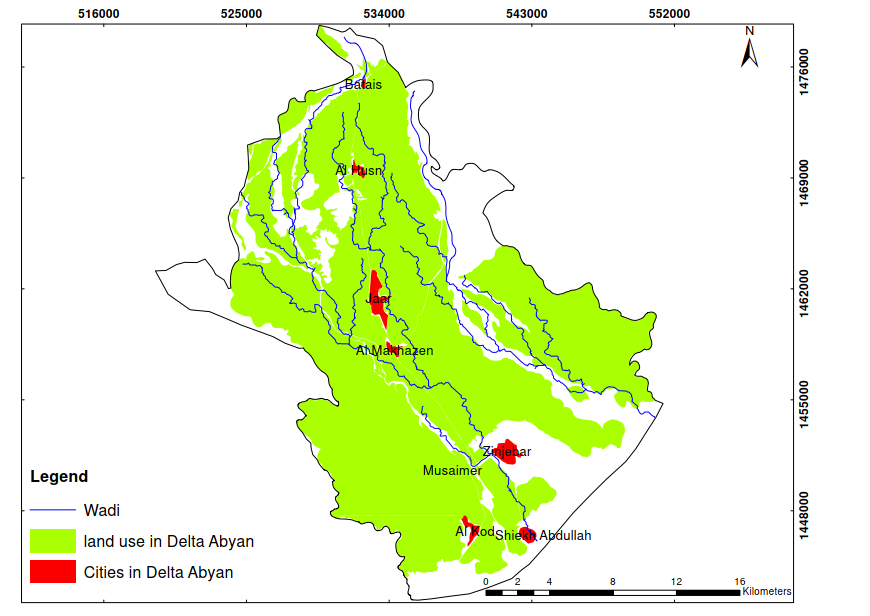Optimizing Irrigation Scheduling for Tomato Cultivation CROPWAT 8 Case Study from lower Wadi Bana, Abyan Delta, Yemen
Keywords:
Yemen, Wadi Bana, Irrigation, CROPWAT 8Abstract
Irrigation scheduling is a critical component of effective crop water management, involving the strategic determination of both the timing and volume of water to be applied. This study employed the CROPWAT 8.0 model to assist in optimizing irrigation practices for tomato cultivation. The primary objective was to accurately estimate the crop's water requirements and define the ideal irrigation intervals. A comprehensive dataset, including rainfall, crop type, soil properties, and climatic factors, was integrated into the model for analysis. The results revealed that October experienced the highest reference evapotranspiration (ET₀) at 5.58 mm/day, while July recorded the lowest value at 4.65 mm/day. The lowest daily crop water requirement occurred in the third decade of December, at 10.9 mm, whereas the highest demand was observed in the third decade of October, at 66.5 mm. Over the entire growing season, the total water requirement for tomato crops was determined to be 625.9 mm
Downloads

Published
How to Cite
Issue
Section
Copyright (c) 2024 Hafidah Ahmed AlMatary, Khaled Mohammed Khanbari, Adel Mohammad Al-Matary

This work is licensed under a Creative Commons Attribution-NonCommercial-NoDerivatives 4.0 International License.
